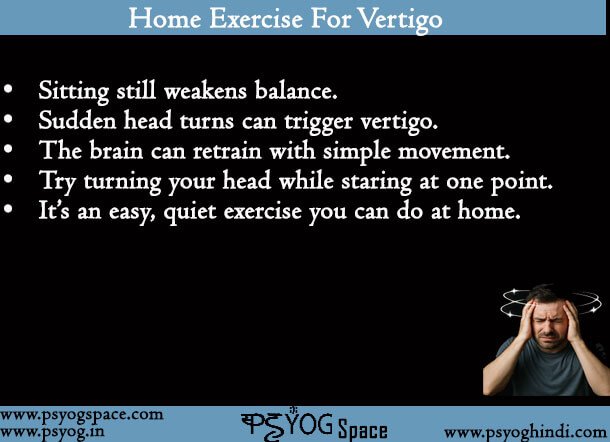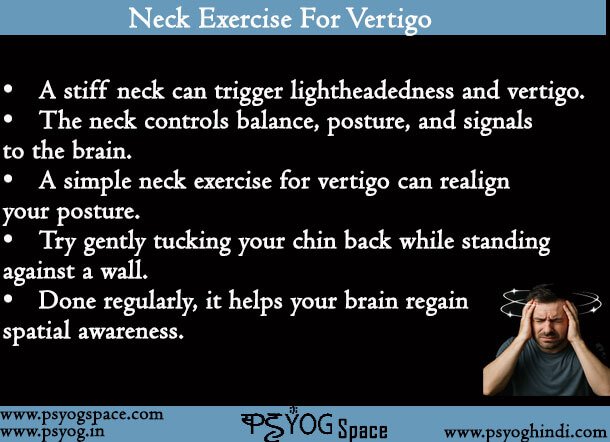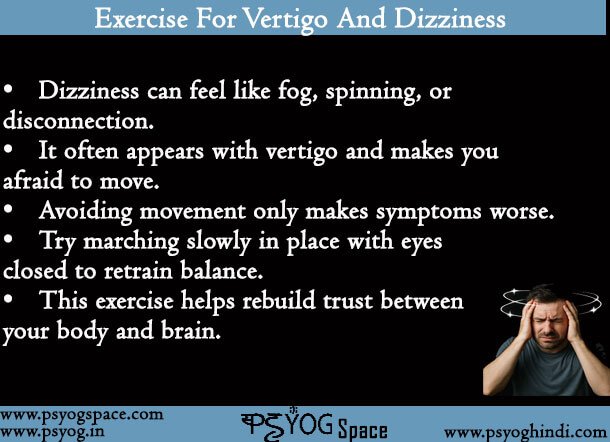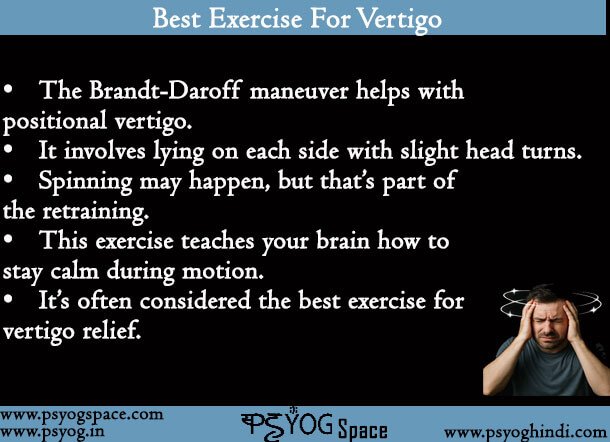Exercise For Vertigo: Best Neck Exercises Doable At Home
There’s something really frustrating about vertigo. You try to explain it to someone and they think you’re just dizzy or maybe tired. But that’s not it. It’s deeper. Your head spins when it shouldn’t. You lie down and it feels like the bed moves. You turn too fast and the whole room tilts. You feel like you’re falling but you’re not. And that’s just the physical part. The mental part is worse. The fear of it happening again. The way you start avoiding normal things—driving, walking fast, even lying down at night. And that’s where movement comes in. Strangely, the thing you want to avoid might be the exact thing you need. Movement, done gently, can teach your brain and body how to come back into sync. Doing a simple exercise for vertigo regularly can make a difference. You don’t need a fancy setup. You can do it at home, in your bedroom or living room, quietly, slowly. A good neck exercise can change the way your body processes space. If you’re dealing with ongoing dizziness or that off-balance feeling, there’s a way forward—and it starts with motion.
Exercise For Vertigo That You Can Do At Home
Most of us spend our days in one position. On the couch. At a desk. Looking down at a phone. We don’t move our heads much. And that lack of motion? It affects our sense of balance. Our brain gets lazy. The systems that keep us steady get weaker. And when we suddenly do move—when we look up quickly or roll over in bed—our brain doesn’t know how to handle it. That’s why something as small as a head turn can trigger vertigo. The good news? Your brain can relearn. And doing a regular exercise for vertigo at home is how that happens.
Here’s a simple one. Sit on a chair. Put your feet on the floor. Find a point on the wall in front of you—anything. A sticker. A scratch. Keep your eyes on that point. Then slowly turn your head to the right. Back to center. Then to the left. Back to center. Keep your eyes locked on that one spot the whole time. Do it ten times each way. That’s it. That’s the whole thing. This trains your brain to stay grounded even when your head moves. It’s not fancy, but it works.
The beauty of this exercise for vertigo at home is that it’s safe, quiet, and doesn’t require anything but a bit of patience.
Law Of Attraction:

Neck Exercise For Vertigo
If you’ve ever had a tight neck and suddenly felt lightheaded, you already know what I’m about to say. Your neck is connected to everything. Blood flow. Nerve signals. Body position. The way your brain knows where your head is in space—it all goes through the neck. A stiff neck can mess all that up. That’s why a regular neck exercise for vertigo isn’t optional. It’s essential.
This one’s easy. Stand against a wall. Let your back and your head touch it. Then slowly tuck your chin like you’re trying to make a double chin—not looking down, just pulling straight back. You might feel a stretch at the base of your skull. That’s good. Hold for a few seconds. Then release. Do this ten times.
This neck exercise for vertigo helps bring your head back into alignment. When your posture shifts forward all day from phones or laptops, this pulls it back. It’s not dramatic. But over time, it changes the way your body reads space.

Exercise For Vertigo And Dizziness
Dizziness is a weird feeling. Sometimes it’s light, like a fog. Sometimes it’s sharp, like the floor is about to give out under you. Other times it’s just a vague unease, like your body isn’t where it’s supposed to be. It’s not always the same as vertigo, but the two often show up together. And either way, they make you not want to move. But here’s the problem. The less you move, the worse it gets. That’s why doing a slow, mindful exercise for vertigo and dizziness can help. Not because it fixes everything at once—but because it teaches your body not to panic.
Here’s one to try. Stand near a wall. Just in case you need support. Now close your eyes. Slowly start marching in place. Lift one foot, then the other. Keep it slow. Focus on balance. Your brain will want to freak out. Let it. Stay with the movement. Do this for about one minute.
This exercise for vertigo and dizziness isn’t about building muscle. It’s about building trust. Between your body and your brain. Between your movement and your sense of space.
Also Read:

Best Exercise For Vertigo
There’s no magic move that fixes all kinds of vertigo. But there is one that helps a lot of people, especially those with positional vertigo—the kind that hits when you roll over or tilt your head a certain way. It’s called the Brandt-Daroff maneuver. And it might just be the best exercise for vertigo if you deal with those sudden, spinning episodes.
Here’s how you do it. Sit on the edge of your bed. Turn your head a little to the left. Then lie down quickly on your right side. Wait. The spinning might start. Stay there until it settles. Then sit back up. Wait again. Then turn your head a little to the right and lie down on your left side. Same thing. Do this five times each way.
The reason this is often called the best exercise for vertigo is because it exposes you to the thing you’re afraid of—movement—without overwhelming your system. It’s not about avoiding the spin. It’s about teaching your body how to handle it.

Breath For Health:
Conclusion
Vertigo makes you question every movement. Every small tilt or shift starts to feel dangerous. So you stop moving. You tighten up. You start living smaller. But that’s not the answer. The answer is in the movement itself. A daily exercise for vertigo, even something tiny and slow, can change your brain. It tells your system that movement is okay again. That turning your head doesn’t have to mean spinning. That walking across the room can feel solid. You can start at home. No noise. No tools. Just a few minutes, some breath, some space. A quiet neck exercise before breakfast. A minute of slow marching after lunch. If dizziness comes with it, fine. Let it. You’re not avoiding it anymore. You’re building strength inside of it. That’s how real change begins. The best approach isn’t force. It’s kindness. Gentle, repetitive motion. Day by day, your brain learns. Day by day, you come back to center.
FAQs
The best exercise for vertigo depends on what’s causing it, but the Brandt-Daroff maneuver helps many people. Especially if you feel spinning when you lie down or roll over. It teaches your body not to react so intensely to movement. Other good options include head turns with a fixed gaze, or balance work with your eyes closed. It’s less about the specific move and more about consistency. You need to do it often, even when you don’t feel like it. That’s when it works.
Yes. If your neck is stiff or your posture is off, it can absolutely affect your balance. The brain uses neck feedback to figure out where your head is. If the neck isn’t moving properly, or if muscles are tight, the brain gets confused. That confusion leads to dizziness, instability, sometimes even vertigo. Gentle neck exercises can open space, improve circulation, and help the brain trust your movements again. They won’t fix everything, but they help the body feel safer.

